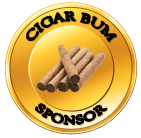User Tag List
Results 1 to 10 of 18
Thread: Dyed Maduro wrapper
Threaded View
-
03-28-2015, 08:32 PM #3Resident Perdomo whore


- First Name
- Bill
- Join Date
- Feb 2015
- Location
- NH
- Posts
- 241
- Ring Gauge
- 87
- Mentioned
- 1 Post(s)
- Tagged
- 0 Thread(s)
"You run into an asshole in the morning, you ran into an asshole; you run into assholes all day, YOU'RE the asshole.







 Reply With Quote
Reply With Quote